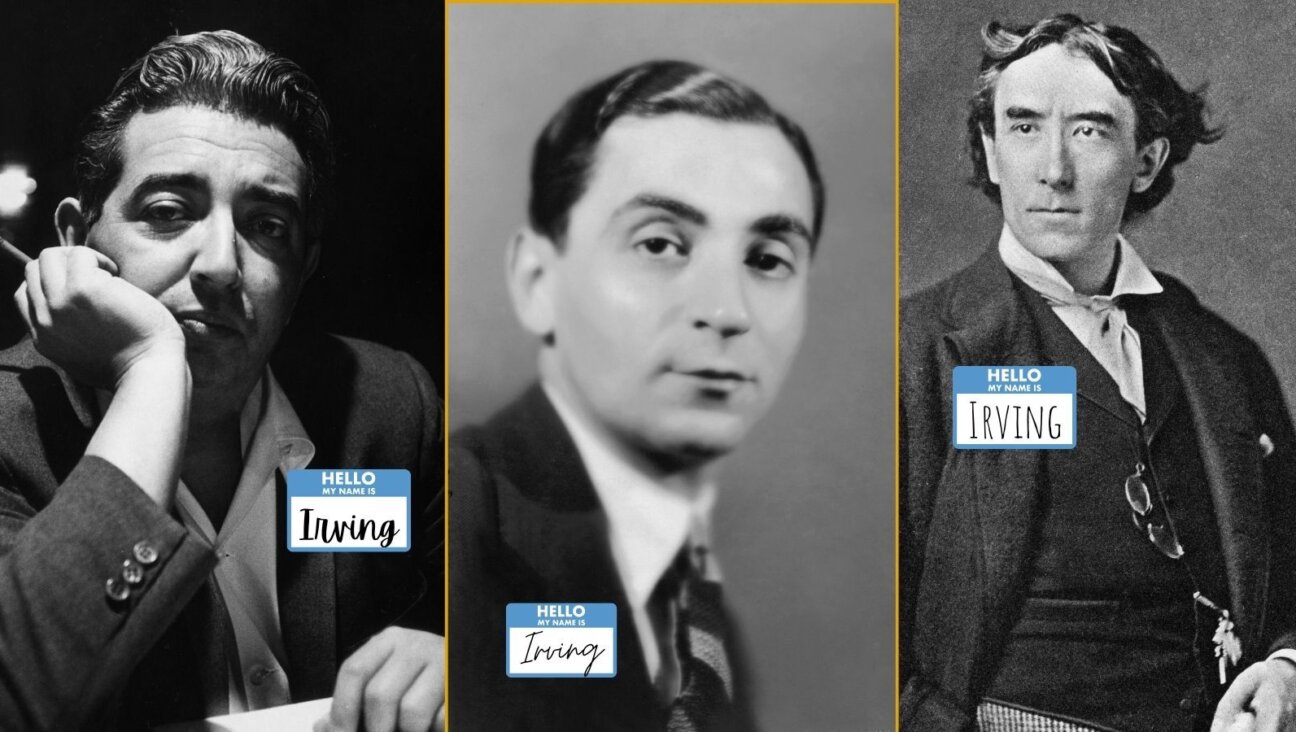Facebook Now Home to New Kind of Holocaust Remembrance
Anne Frank’s Facebook page looks much like any other teenage girl’s: The profile picture shows Anne leaning against a wall; her hair is tucked behind her ears, and she stares off sideways, daydreaming perhaps, a slight smirking smile lifting up the corner of her mouth.
The comments on her “wall” are typical, too. “We share the same birthday!” and, “I hate this girl.” A string of teenage commentary follows every one of the many photos that have been posted to the page. One, in which Anne is standing outside in shorts and a sunhat, elicits this remark: “she had long legs! woah! model” In response, a prepubescent boy named Ricky laments, “she did have long legs……i hate hitler.”
Whether the fact that Anne Frank has a Facebook page (one set up for “fans”) strikes you as creepy and inappropriate or as completely normal and even charming will depend largely upon your age and the number of hours you spend on a laptop each day.
But the reality is that Holocaust memorialization is moving onto social-networking sites like Facebook and presenting new opportunities for remembering the victims — and bringing a whole new set of complexities. One of the most popular and most disorienting forms that this new virtual commemoration is taking is the Facebook profile. Even the United States Holocaust Memorial Museum is now involved with providing information to fill out the details of some of these profile pages.
The desire to personalize the identities of the 6 million Jews who perished in the Holocaust is not new. What is novel is the combination of this desire with a platform that is premised on empowering anybody to project his or her individuality far and wide.
There’s no more successful example of this fusion than the Facebook profile page of Henio Zytomirski. A small boy who must be no more than 7 or 8 years old appears in a black-and-white photo in the box provided for a profile picture. He looks full of joyful young life. But Henio has been dead since 1942, killed in a gas chamber at the Majdanek concentration camp when he was 9. On March 25, which would have been his birthday, dozens of Facebook users wished him a happy birthday on his “wall.” As of April 12, he had 4,989 “friends.”
One element unique to Henio’s profile is that it is being used to recount a narrative of this little boy’s life. In status updates written in Polish, Henio seemingly tells his story in his own voice. On September 29 of last year, for example, this entry was posted: “Winter has arrived. Every Jew must wear the Star of David with his last name. A lot has changed. German troops walk the streets. Mama says that I shouldn’t be frightened, and always that everything is just fine. Always?”
The person posting in Henio’s name — and with the knowledge of his relatives — is Piotr Buzek, a 22-year-old history student from Lublin who works at the Brama Grodzka Cultural Center. According to Facebook’s policy, profiles of people other than oneself are allowed only with permission from the profiled person or, in this case, from that individual’s family. Buzek set up Henio’s page in August 2009, and since then he has been dutifully adding “friends” and posting photos and frequent updates. The center where he works was set up to promote the multicultural heritage of Lublin and has an archive of information and material on Henio’s life. It is from this that Buzek has created his virtual identity.
Buzek doesn’t think it strange that he should be speaking in the voice of a long-deceased Holocaust victim. As he sees it, this is a way of engaging a younger generation with what he calls “our tragic history.” Focusing on Henio and in essence bringing him back to life through Facebook is his way of making the Holocaust real.
“We can’t commemorate 6 million people,” Buzek said when the Forward reached him in Lublin. “I can’t imagine this number. But I can imagine one person. This boy was one of them. I can imagine him. And if you want to feel something deeper, you should concentrate on one person. You can touch it. You can’t touch 6 million people. You can touch one.”
Henio Zytomirski’s Facebook profile got some attention for being one of the first to use the site for that purpose. More than a few people were puzzled that Facebook could become a place for memorializing.
“The thing to remember is that many of these new social-media platforms are fluid, and information posted on them is very ephemeral,” said Evgeny Morozov, a blogger and contributor for Foreign Policy magazine. “What is it about Facebook or Twitter that makes them suitable for commemoration? I can’t find anything, because they are built on the opposite principle. All the most recent stuff comes first.”
Those engaged in the more traditional forms of Holocaust remembering — namely, museums and physical memorials — are mostly skeptical of this new, looser, virtual form.
David Klevan is the education manager for technology and distance learning at the Holocaust museum. He was one of the organizers of what was called an “un-conference,” a gathering last December of museum professionals partly to try to figure out how to better use these new social-networking platforms in ways that don’t trivialize the content.
Klevan looks a little warily at the Facebook profile phenomenon because he worries that those posting and those reading the posts don’t have access to a full historical context. Young people respond directly and sometimes thoughtlessly to the image or words in front of them — like the photo of Anne Frank in shorts. The pieces of information presented are disconnected from a larger narrative, and in a way that does not allow for any follow-up questions or further study.
“We prefer to maintain as much of the context as possible,” Klevan said. “If people are going to learn the stories of the victims, it’s preferable that they have easy access to supporting information and also being aware of where the content is being encountered.”
But the Holocaust museum has been providing information on the individual stories of victims to a Web site called footnote.com, an online service that is trying to digitize historical documents and use them to create virtual memorialization projects. One of the service’s bigger endeavors is a complete online simulacrum of the Vietnam Wall Memorial, where information can be added to fill out the identities of those who died. Footnote.com has used the information provided by the Holocaust museum to create 600 Facebook profiles for Holocaust victims.
Unlike Henio’s profile, the Facebook pages created by footnote.com are different than the pages that individuals make for themselves. But they do still have all the usual features — a profile picture, and a “wall” where pictures and comments can be posted, and attempt to do the same thing: create a virtual space for the individual victim to emerge.
“Our running tagline has been, ‘History is biography,’” said Chris Willis, vice president of social media for footnote.com. “If we are changing the form that that biography is being presented, it is only to make it more accessible. It’s going to make it easier for people to add more information about a life, maybe even add the kind of information that will help that life seem more unique and, in the end, much more compelling.”
Contact Gal Beckerman at [email protected]
















